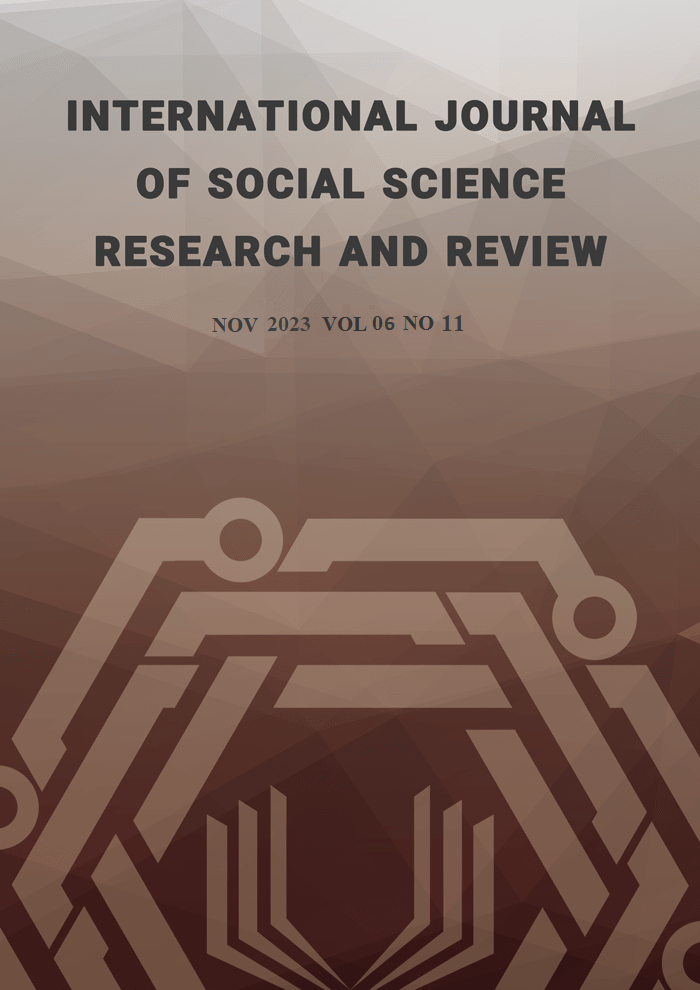Femicide: Stop the Killing of Women by Men in South Africa
Abstract
In recent years, the killing of women by men in South Africa has reached an unacceptable crescendo. Most of the victims have entrusted their lives in the hands of loved ones turned killers. Several Victims of femicide are very familiar with their killers and, in some instances are in a social relationship. Femicide is a manifestation of one of the devastating effects of patriarchy in contemporary society. More than three women are killed in South Africa daily. Some of the causes of femicide are male dominance, alcohol and firearms, social and cultural beliefs, psychologically related illness, breakdown in relationships, economic challenges, frustration, aggression, and violence. This article has three aims, first, to highlight and fight against femicide. Second, to call for harsher punishment to be put in place within our criminal justice system, and third, to explore preventative measures designed to reduce femicide. Some of the findings are that collectively as a society we are not doing enough to put an end to this callous murder committed by men against defenceless women. Refuge homes for victims of gender-based violence need to be adequately funded, social workers need to be very much more proactive in rescuing women from the hands of their potential male killers. Finally, the government must create businesses and employment to empower women with the financial power needed to become independent from abusive men.
References
Article 1, of the United Nations Declaration on the Elimination of Violence Against Women, 1993.
Russell, D.E.H (2001). Femicide in Global Perspective. New York: Teachers College Columbia University Press.
Russell, D.E.H. (2012). Defining femicide. Introduction speech presented to the United Nations Symposium on Femicide.
Pinelo, L. A. A (2015). Theoretical Approach to the Concept of Femicide/Feminicide. (MS Thesis, Universiteit Utrecht.
Etherington, N. & Baker, L., (July 2015). Forms of Femicide. Learning Network Brief (29). London, Ontario: Learning Network, Centre for Research and Education on Violence Against Women and Children.
World Health Organization (2013). Understanding and addressing violence against women: Femicide.
Laurent, Claire (2013). Femicide: The Killing of Women and Girls Around the World. Academic Council on the United Nations System (ACUNS) Vienna Liaison Office.
Rothman, E.F., Exner, D., & Baughman, A. (2011). The prevalence of sexual assault against people who identify as gay, lesbian, or bisexual in the United States: A systematic review. Journal of Trauma, Violence & Abuse, 12(2), 55-66.
The South African Police Service Annual Report 2016/2017.
World Health Organization Report (WHO) (2016). Understanding and Addressing Violence Against Women.
The United Nations Office on Drugs and Crime (UNODC) report, 2019.
The World Health Organization, Global Status Report on Violence Prevention, 2014).
Jasmina Brankovic (2019). What drives violence in South Africa? Johannesburg. The Centre for the Study of Violence and Reconciliation (CSVR).
Jewkes, R. (2002) Intimate Partner Violence: Causes and Prevention, Lancet 359, no. 9315): 1423–29
Jewkes R, Abrahams N. The epidemiology of rape and sexual coercion in South Africa: An overview. Soc Sci Med 2002;55(7):1231-1244. https://doi.org/10.1016/S0277-9536(01)00242-8 2.
Machisa M, Jewkes R, Lowe Morna C, Rama K. The war at home: Gender Based Violence Indicators Project, Gauteng Research Report. Johannesburg: Gender Links and South African Medical Research Council, 2011.
Fox, G. L. (2002). Economic distress and intimate violence: Testing family stress and resources theories. Journal of Marriage and Family, 64(3), 794.
Bonzaier, F.(2005) . Observations & Commentaries. Woman Abuse in South Africa: A Brief Contextual Analysis. Feminism and Psychology, 15: 99-103.
Dobash, R.E. and Dobash, R.P. (2011) What Were They Thinking? Men Who Murder an Intimate Partner. Violence Against Women, 17: 111-34.
Bograd, M. (1990) Why we need gender to understand human violence. Journal of Interpersonal Violence, 5 (1), 132-135.
De Beauvoir, S. (1953) The Second Sex, Women As the Other. US. Vintage Press.
De Beauvoir, S. (1972) All Said and Done: The Autobiography of Simone De Beauvoir 1962-1972 (Introduction by Toril Moi). Paris. Da Capa Press.
De Beavoir, S. (1953) The Second Sex, Women As the Other. US. Vintage Press.
Mogoatlhe, L. (2019) Uyinene Mrwetyana’s death Shows South Africa’s Femicide. Global Citizen.
News 24. #I am Nene: How Uyinene Mrwetwana’s murder ignited a movement. 25 September 2019.
Zulu, N. (2022) Ntuthoko Shoba sentenced to life for the murder of Tshegofatso pule. Sunday World, July 29 2022.
Dlamini, P. (2022) Shoba gets life sentence for brutal murder of Tshegofatso Pule. 29 July 2022. City Press.
Shange, N. (2018). Sandile Mantsoe found guilty of Karabo Mokoena;s murder. 02 May 2018. Timeslive .
Sokanyile, A. (2020) Why did you kill her and discard her like a dog? Murdered Sibongoiseni Gabada’s family speaks Iol news. June 13, 2020.
Sobuwa, Y. (2019) Country's femicide list keeps growing. Sowetan live. 31 September 2019.
Copyright (c) 2025 Shaka Yesufu

This work is licensed under a Creative Commons Attribution-NonCommercial-NoDerivatives 4.0 International License.
Copyright for this article is retained by the author(s), with first publication rights granted to the journal. This is an open-access article distributed under the terms and conditions of the Creative Commons Attribution license (https://creativecommons.org/licenses/by-nc-nd/4.0/).





